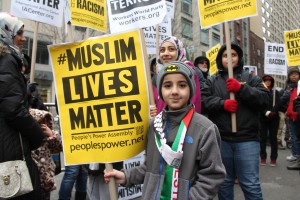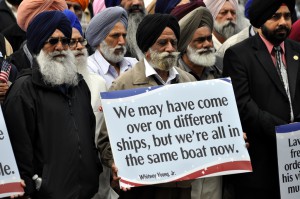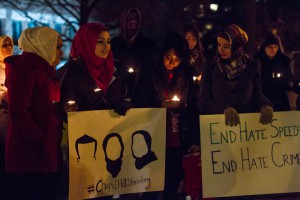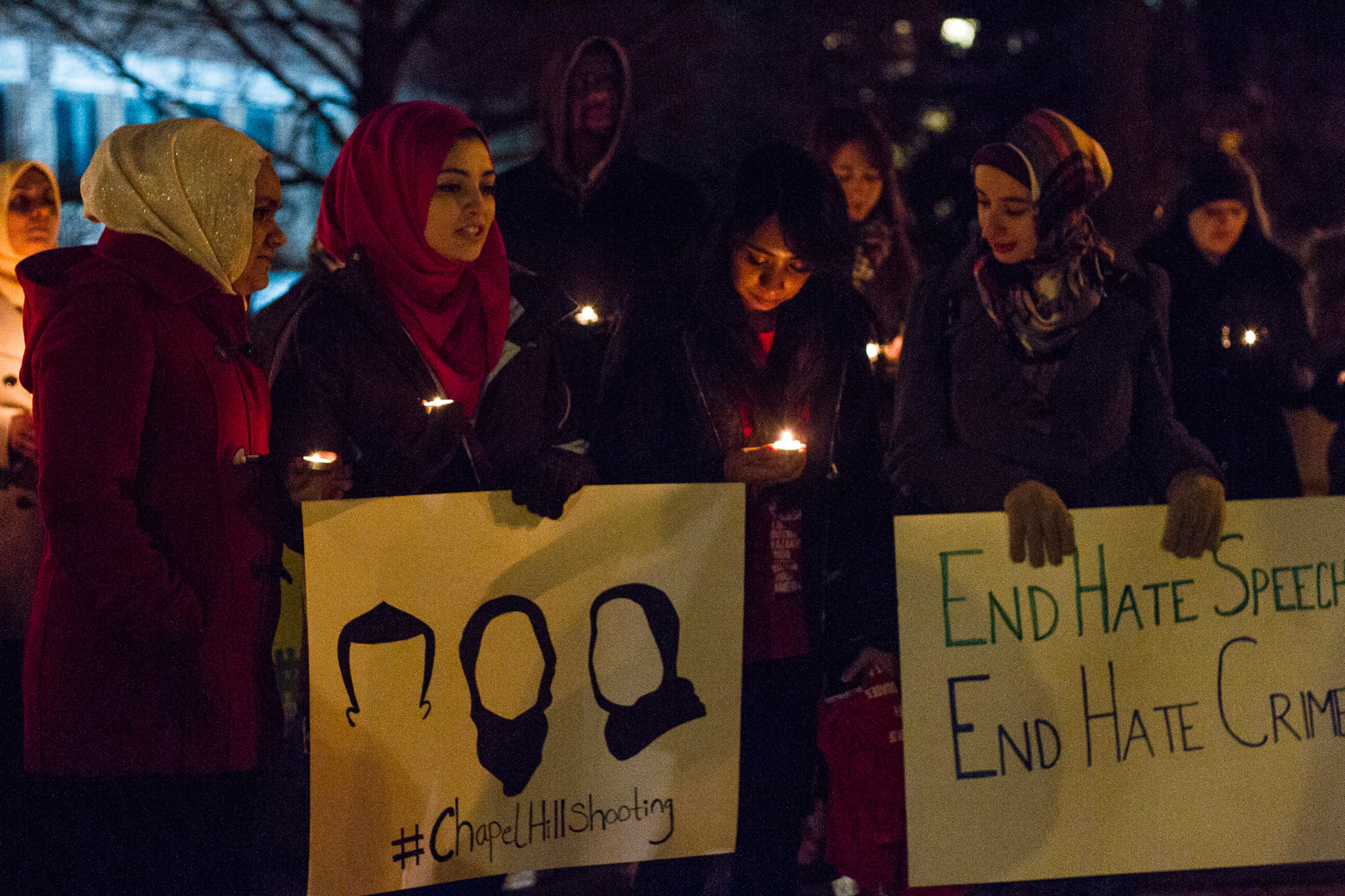On February 10th this year, three American Muslim students were shot and killed in their own home by a white Atheist male, allegedly over a parking dispute. Days before her death, one of the victims had told her father that the killer “hates us for what we are and how we look”. Whether or not it was a crime of hate seems to be irrelevant since most media outlets barely covered the story as is. Subsequently, the clear lack of media attention provoked many questions from the Muslim communities in America. If it had been a hate crime against Muslims would we have heard more about it? If the tables were turned and it was three white students murdered by a Muslim man wouldn’t CNN or NBC or Fox news be crying “terrorist!”? Such concerns had been expressed after the shooting via social media outlets such as Twitter. Not only was the Muslim community outraged but many minority groups exclaimed their frustrations with American and European media outlets, using the hashtag #MuslimLivesMatter.

In truth, Islamophobia is growing, not only in America but all over the world. And it seems, at times, that certain Western media outlets are doing all they can to nurture this hate by spreading negative representations of Islam or in the case of the Chapel Hill shooting, a pure lack of representation. Some have speculated that it started with the “War on Terror” and by painting Muslims as savages and pinning them together with extremists, the American and European media has dehumanised an entire group of people and made it easier for the western world to turn a blind eye when our governments bomb thousands of civilians.
For me it started when the Towers fell, I must have been 9 years old and I remember the way things changed for my family. I remember how people treated my brown father giving him suspicious looks. And how he had bought us American flag stickers to stick on our cars so people would know we loved America, he made it seem like a game but he was scared and he yelled when I put way too many on one window. They’ll think we’re trying too hard, he said. I can’t forget the time my best friend told me we needed to kill all Muslims, even the children because they’ll just grow to be evil, or how her mom had heard her and didn’t say anything, she merely laughed.
Things were bad but we were safe, as long as people knew we weren’t Muslim, we were Sikh, it’s different. Things were much worse for my Muslim classmates. I watched as kids donning confederate flag T-shirts threw cans and garbage at a girl wearing a hijab, the bus driver watched too but didn’t do anything. And my friend Michael, an exchange student from Pakistan was beat up by a bunch of rednecks, and when he finally fought back he was suspended for a week. In truth, this segregation never really went away, and today it has become much worse with the Charlie Hebdo attacks, the Chapel Hill shooting, and a rise in anti-Muslim hate crimes. I recognise the theme of ‘us versus them’ and it scares me.

So the question we should be asking is, where does this hate for Islam stem from and how has it developed so rapidly? When we take a closer look we can see how the spreading of anti-Muslim sentiment may have started and who helped it along the way. In an interview with DemocracyNow! Yasmine Taeb, co-author of Fear, Inc. 2.0: The Islamophobia Network’s Efforts to Manufacture Hate in America discusses the “Islamophobia network” and its successful attempts to dehumanise Muslims and spread false information about Islam as a religion, going on to explain “This is how the Islamophobia network operates. A group of foundations and donors provides the money—to date, more than $57 million. That money is given to a selection of tightly knit organizations that rely heavily on a handful of so-called experts that orchestrate misinformation about Islam. That misinformation then spreads to a larger network of activists, politicians, media and more, creating an echo chamber around the false idea that Islam is a violent religion.”
Meanwhile, the media goes on dispersing negative ideas about Islam, showing violence and war in Muslim countries without context, portraying Muslims as violent people who can’t or won’t be helped, and at the same time neglecting to cover the atrocities committed by other religious extremists. For example, Western media outlets have completely downplayed and basically dismissed the humanitarian crisis in Burma, where Rohingya Muslims are being killed by the masses. Furthermore, columnists and scholars are routinely interviewed by CNN and Fox News on how the West should be wary of Islam. At the same time minority voices are quieted, and Muslim scholars and analysts who have something to say against blind hate are without a prominent platform to do so.

Some news personalities have even gone as far as to claim that it is the Muslim community’s responsibility to end terrorism committed by Al- Qaeda or ISIL, leaving viewers with a sense that there’s no difference between ordinary people who practice Islam and Islamist extremists or terrorists. What these news personalities forget to mention is that groups like Al-Qaeda and ISIL kill more Muslims than non-Muslims and the majority of Muslims condemn these attacks as much as anyone else.
Three innocent students are dead, and the world didn’t even blink. Propaganda blatantly continues to corrupt our societies, and the people who should be held accountable are dismissed. Instead of information, we’re being fed ignorance. The consequences of which are deadly. As Muslim rights advocate, Dr. Elmasry puts it, “-what if acts of anti-Muslim violence are consistent with at least some strands of current western ideology? What if Islamophobia has become so commonplace, so accepted, that it now represents a hegemonic system of thought, at least for relatively large pockets of people in some regions of the West?”. Seemingly, no amount of American flag stickers can bridge the gap that’s formed between Western societies and Muslim communities. It’s time for a discussion to be had.
By Naseem Garcha
Image credit:
Picture 1: Joe Catron, licensed under CC BY-NC 2.0
Picture 2: jasleen_kaur, licensed under CC BY-SA 2.0
Picture 3: mschierbecker, licensed under CC BY-SA 2.0





